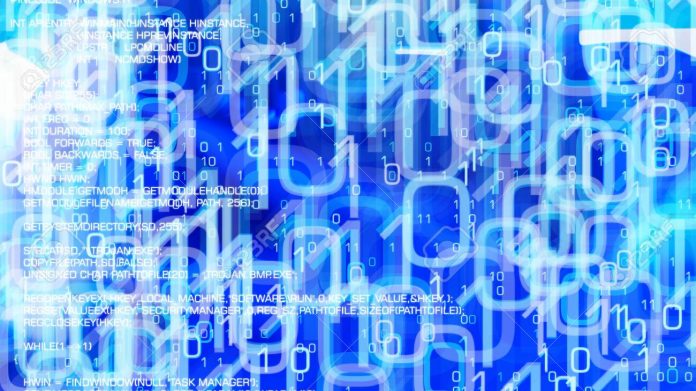This article has been written by Nupur Mitra, Advocate – LL.B (Jamia Milia Islamia), LL.M (London School of Economics), Fellow (Columbia University), pursuing the Diploma in Cyber Law, FinTech Regulations, and Technology Contracts from LawSikho. The article has been edited by Prashant Baviskar (Associate, LawSikho) and Zigishu Singh (Associate, LawSikho).
Table of Contents
Introduction
Intellectual property encompasses the rights involving the original expression of work and inventions in a tangible form that has the capacity to be duplicated multiple times. The protection of such property against unfair competition is essential to the rights of the human endeavour in its intellectually innovative form. Resources and skills are invested in intellectual property, where the creator stimulates research and development to achieve economic development and technological advancements for the country and society at large. Intellectual property rights engrossed itself as a strong tool to keep intellectual endeavours intangible medium.
With the onset of cyber technology, global markets have benefited copyright owners. This is true, but beyond the considered benefits, the risks loom large, if the consequences of emerging trends are left unaddressed. Like any desired invention, cyber technology has its pitfalls. Unlicensed use of trademarks, trade names, service marks, images, codes, audios, videos, literature content by way of illegitimate practices of hyperlinking, framing, meta-tagging, spamming, and the list is endless, emerge as the regular infringements to the new universe of intellect and skills in the cyber domain.
This article analyses some of the legal challenges faced by intellectual property in cyberspace, limiting its scope to some major conditions in the copyright domain for the time being. Copyright is threatened by the emerging digital presence of technology, particularly the ‘internet’, where the distribution of digitally copied files has the potential to occur at jet speed and nil cost.
Challenges faced re copyright interpretations
At the instant of being digitised, the various components of the copyright element gain the capability to be molded into a variety of forms by way of linking, in-lining, and framing with practically no permissions required. This poses a challenge to the copyright owners’ ownership and control over their own innovation.
- Deep linking is a challenge, where the law is thus far ambiguous -both international and domestic. A balance of interests is influenced in the process, namely rights of the copyright owner viz-a-viz the free flow of information accessible to the society, which is the sine qua non for the working of the internet. A legal issue in regard to deep learning emerges while reading Sections 14 and 51, Indian Copyright Act, 1957, whereby it is not clear as to the exact stage when the reproduction of the copyrighted work is actually being committed. Is it at the stage of employment of deep-linking by the person without a disclaimer that the links do not constitute approval, or is it when the user visits the linked page at its discretion through that deep-link; therein lies the source of ambiguity.
- In-lining linking poses a similar challenge. The link’s creator merely provides a visiting browser with the road map to retrieve the image/s, which is then copied by the final user who is unaware of the fact that its browser is pulling different components from various websites. Here too, the anomaly is with regard to the exact phase of reproduction of the copyrighted image(s). The in-line link creator is not communicating or distributing, though definitely aiding in it or at least making adaptations to the copyrighted piece thereby coming under the ambit of Section 14 (a) (vi) Copyright Act, 1957. On the other hand, the final user has no mens rea or even knowledge of any violation of copyright and is thus caught unaware. Further, if Section 2 (ff) Copyright Act, 1957, is to be read in interpretation, then the expression “by any means of display” as communication to the public at large, would be too far stretched to include all content on the websites on the internet.
- Framing too is a concern, and subject to legal debate under the interpretation of derivation and adaptation under Section 14(a)(vi) Copyrights Act, 1957. The framer cannot be held responsible for copying, communicating, or distributing the copyright, it merely provides the user browser with modus operandi to retrieve the copyright content which is fetched from the owner’s website by the user’s browser. The pertinent question of legal interpretation is whether fetching some elements from the multimedia setting of the copyright owner and thereby combining them with more to create its own, amounts to derivation or adaptation under law.
Protection of intellectual property
It is clear from the above that protection of data in cyberspace accompanies myriad issues, but the common point of interpretation segregating the levels for copyright infringement may be based on ‘intent’. Dishonest intentions ought to lead to reading the legal and regulatory provisions in more stringent forms to derive the capability to disallow any of the copyright infringements seemingly permissible or at the least sitting over the fence on the superficial. Rampant violations of copyright rights on the internet affecting a larger mass, call for sharper legal protections. The responsibility is not restricted to the lawmakers or the law enforcement systems, but also to the copyright owners and software companies. Copyright notices and displays of licenses and warnings with limited permissions on the websites by the copyright owners need to be ensured. Blanket prohibitions may no longer serve the purpose, as technology is rapidly evolving and copyright may not seem to be affected if judged cursorily, especially where control over serious indirect violations are the emerging possibilities.
There are abundant theories about protecting intellectual property rights, but the common thread of all such opinions is the necessity to guard, recompense, and kindle innovation in the creative works and initiatives of the innovator. Regulatory framework and legal interpretation are essential keys to safeguard creators from the malpractices prevalent in the disguise of internet freedom. The harmonization of international law and positive domestic laws is essential to bolstering intellectual property rights in cyberspace, which is essentially and practically without borders.
International law governing intellectual property in cyberspace
Berne Convention (1886), Madrid Agreement Concerning the International Registration of Trademarks (1891), Hague Agreement Concerning the Registration of International Designs (1925), Rome Convention for Protection of Performers, Producers of Phonograms and Broadcasting Organizations (1961), Patent Cooperation Treaty (1970) Agreement on the Trade-Related Aspects of Intellectual Property Rights (1994), World Intellectual Property Organization Copyright Treaty (1996), World Intellectual Property Organization Performances and Phonograms Treaty (1996), and Uniform Domain Name Dispute Resolution Policy (1999), in consolidation form the international instruments that govern Intellectual Property Rights.
Berne Convention (1886) protects the rights in Literary and Artistic Works, excluding daily news or press information. Special provisions are provided for developing countries.
Rome Convention (1961), extended copyright protection to authors of creative works and owners of physical indicators of intellectual property, for the first time. It allows domestic implementation enacted by member countries, where the dispute is subject to the International Court of Justice for remedy unless arbitration.
TRIPS (1994) is a multilateral agreement on intellectual property that covers copyrights and related rights in the widest range.
WPT (1996) is for the protection of the copyright of authors in their literary and artistic works in international law.
WPTT (1996) is for the protection of the rights of performers and producers in international law.
UDRP (1999) is for the resolution of disputes on registration and use of internet domain names.
The international treaties have a long way to tread before they are capable of protecting intellectual property rights on the ground and within the nations. Until practical realization of the best practices of the treaties into domestic law takes a front seat, the standardization of protection in the intellectual property rights domain would remain a distant dream, miles away from reality.
Applicable laws in India
In India, Section 51 (a) (ii) Copyrights Act, 1957 is very clear that exclusive rights are vested in the copyright owner and anything to the contrary constitutes copyright infringement thereof. This legal provision, in the absence of any express provision for determining the liability of internet service provider (ISP), may be interpreted to come under the purview of expression ‘any place’ and ‘permits for profit’ where ISPs allow server facilities to stockpile user data at their business locations and make available for broadcast for making profit through charging for services and advertisements. But such interpretation faces difficulty to gain ground by way of added ingredients of ‘knowledge’ and ‘due diligence’ to be fulfilled before the ISP can be held to have abetted infringement of copyright.
Information Technology (Intermediaries Guidelines) Rules 2011 and Section 79 IT Act, 2000 grant conditional safe harbour from liability of the online intermediaries, though keeping it open for interpretation on their liability under any other civil or criminal Act. IT Act 2000 makes an intermediary non-liable for any third-party content hosted on its site. The 2011 Guidelines provide a diligence framework to be followed by intermediaries to avail the exemption granted in Section 79 IT Act, 2000. This makes it important for proactive judicial interpretation depending on the facts of each case.
In Super Cassettes Industries Ltd. vs. Myspace Inc. & Anr., the Hon’ble Court held the intermediary liable for allowing viewing and sharing images over the intellectual property ownership of Super Cassettes. The case pronounced judicial activism by granting precedence to the Indian Copyright Act, 1957 over the safe havens of IT Act, 2000, through reading Section 81 of the IT Act 2000 in conjunction with and over Section 79 of the IT Act 2000.
Section 14 Copyrights Act, 1957 elucidates what constitutes exclusive rights. The Hon’ble High Court of Calcutta had recently passed an ex-parte injunction at the instance of the petitioners Phonographic Performance Ltd. (PPL), Indian Music Industry (IMI), and Sagarika Music Pvt. Ltd., to restrict an array of ISPs namely Dishnet Wireless Ltd, Reliance Wimax Ltd, Hathway Cable & Datacom Pvt Ltd, Hughes Communications Ltd India, Tata Teleservices (Maharashtra) Ltd, Reliance Communications Infrastructure Ltd, Wipro Ltd, Sify Technologies Ltd, Bharti Airtel Ltd, Vodafone India Ltd, and BG Broadband India Pvt Ltd., from providing access to www.songs.pk.
It is clear that a Napster-like network in India would fall within the ambit of this Section whereby it would be held liable for encroaching upon the exclusive copyright rights of the intellectual property rights owner through communication or facilitation of communication to the public.
Section 51 (b) (ii) Copyrights Act, 1957 suggests the infringement of copyright through distribution either for the purpose of business/trade or to prejudice the copyright owner. P2P network in India thereby would be distributing such work that would be prejudicial to the interests of the copyright owner, even if the component of trade/business is missing in it. Hon’ble Courts ought to be cautious while granting the defence of fair dealing for copyright infringement under Section 52, Copyright Act 1957.
Jurisdiction of intellectual property issues in cyberspace
Cross-border disputes against private parties and hybrid infringements are an emerging concern, as the globe shrinks into cyberspace with no borders. Courts face a constant dilemma of which cases come under the purview of their jurisdiction for prescription, adjudication, and enforcement. The objective aspect of territorial jurisdiction is crucial to this. A sovereign has the power to adopt a criminal law that may be applicable to offences that effectuate within its borders even though the offensive act was committed outside its borders. The courts may assume jurisdiction for prosecuting a cyber offender based on universal jurisdiction, where the offensive acts are known universally by international law.
Out of the variety of theories and legal concepts that have evolved in the recent past to address this major impediment of the jurisdiction of courts to try infringements of intellectual property in the open world of cyberspace, the most noteworthy of which are the Minimum Contacts Test, the Effects Test, and the Sliding Scale Test or ‘Zippo Test’. These are theories derived from US Courts. The Minimum contacts test is applicable in circumstances where one or both parties are from outside the court’s territorial jurisdiction whereby there is an element of contact with the state where the court is located. The Effects test is applicable where the consequence of the injury is felt at the particular state where the court is located. The Sliding Test determines personal jurisdiction through non-resident interactivities and the exchange of commercial information over the internet of non-resident online operators.
Section 75 IT Act, 2000 applies to offences committed outside India if the conduct constituted an offence involving a computer, computer system, or computer network located in India. Section 4 IPC, 1860 extends its jurisdiction to offences committed in any place outside India targeting a computer resource located in India. Indian courts have the legal tools to adjudicate against the infringers of intellectual property in the cyber domain, and judicial activism followed with effective jurisprudence would come much to the rescue of the intellectual property owners.
Conclusion
With the emerging trend of modernization of technology, it is crucial to have a meaningful legal discourse on the intellectual property issues that are set to barrage the cyber world. Solutions are critical to the present discourse. Traditional regulations revolving around intellectual property protection are not enough to be applied in cyberspace – more is vital, for reasons of the typical challenges faced by the realm of cyberspace.
Border control measures, in the context of global trade and international market and e-commerce, are necessary to be granted a safe environment for import and export free from infringing intellectual property endeavours. Technological protection measures are crucial to the protection of copyright content in the digital environment by way of encryption, cryptography, digital signatures, and digital watermarks. Protection of rights management information to help identify the work, its author, its owner, the numbers or codes involved to represent such works, is imperative. Solutions cannot be restricted to the legal indulgence of regulations and enforcement thereof but stretch itself to encompass the proactiveness of the copyright owners, their successors, software companies, and last but not the least: the perceptions of common people of ‘fairness’ and ‘equity. Social engineering originates from people, and the solutions to ban such manipulations would best come from the same “people”.
References
- https://www.wipo.int/about-ip/en/#:~:text=Intellectual%20property%20(IP)%20refers%20to,and%20images%20used%20in%20commerce.
- https://www.indiacode.nic.in/show-data?actid=AC_CEN_9_30_00006_195714_1517807321712§ionId=14516§ionno=14&orderno=14
- https://egyankosh.ac.in/bitstream/123456789/7670/1/Unit-9.pdf
- https://www.wipo.int/treaties/en/ip/berne/summary_berne.html
- https://www.wipo.int/treaties/en/registration/madrid/summary_madrid_marks.html
- https://www.wipo.int/treaties/en/registration/hague/summary_hague.html
- https://www.wipo.int/treaties/en/ip/rome/summary_rome.html
- https://www.wipo.int/treaties/en/registration/pct/summary_pct.html
- https://www.wipo.int/treaties/en/ip/wct/summary_wct.html
- https://www.wto.org/english/docs_e/legal_e/27-trips_01_e.htm
- https://www.meity.gov.in/writereaddata/files/GSR314E_10511%281%29_0.pdf
Students of Lawsikho courses regularly produce writing assignments and work on practical exercises as a part of their coursework and develop themselves in real-life practical skills.
LawSikho has created a telegram group for exchanging legal knowledge, referrals, and various opportunities. You can click on this link and join:
https://t.me/joinchat/L9vr7LmS9pJjYTQ9
Follow us on Instagram and subscribe to our YouTube channel for more amazing legal content.
 Serato DJ Crack 2025Serato DJ PRO Crack
Serato DJ Crack 2025Serato DJ PRO Crack











 Allow notifications
Allow notifications



